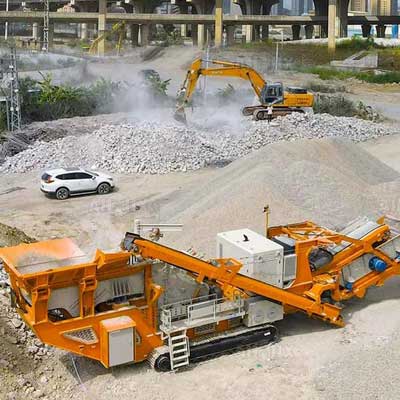


Discover how autonomous mobility transforms mobile crushing plants, enhancing efficiency, safety, and sustainability in mining operations.
In the rapidly advancing field of industrial machinery, the integration of autonomous mobility into mobile crushing plants marks a pivotal innovation. Autonomous mobility enables these plants to operate and navigate without direct human involvement, signaling a revolutionary shift from traditional methodologies. This breakthrough offers significant advantages in operational efficiency, safety, and adaptability, redefining the capabilities of mobile crushing systems in quarrying and mining.
Autonomous mobility relies heavily on cutting-edge sensor systems like LiDAR (Light Detection and Ranging) and high-resolution cameras. These sensors provide a detailed, dynamic understanding of the plant’s surroundings, enabling intelligent navigation through complex environments. By continuously mapping and analyzing the area, the crushing plant can identify obstacles, adjust its path, and make real-time decisions to ensure seamless operations.
Complementing these sensors are adaptive control systems powered by sophisticated decision-making algorithms. These systems process environmental data to dynamically adjust the plant’s operational parameters, ensuring optimal performance. Whether encountering variations in material density or unexpected terrain changes, these technologies empower the plant to respond efficiently and maintain productivity.
The combination of sensors and adaptive systems forms the backbone of autonomous functionality, enabling plants to operate with unprecedented precision and reliability.
Implementing autonomous mobility in mobile crushing plants demands meticulous planning and robust engineering. Integrating multiple technologies—ranging from sensors to control systems—requires precise synchronization to achieve reliable and safe operation. Rigorous testing and validation are essential to address potential vulnerabilities and ensure system stability under real-world conditions.
Once implemented, the advantages of autonomous mobility are transformative. Autonomous systems continuously optimize the crushing process, adapting to changing material characteristics for maximum efficiency. These systems also enhance safety by allowing equipment to operate in hazardous environments without endangering human operators.
From an environmental perspective, autonomous mobility contributes to sustainability. Optimized navigation minimizes fuel consumption, while efficient route planning reduces emissions. Additionally, autonomous mobility streamlines workflows, accelerating project timelines and reducing operational costs.
The implementation of autonomous mobility in mobile crushing plants is a testament to the industry’s commitment to innovation and progress. By leveraging advanced sensors, adaptive systems, and intelligent algorithms, these plants achieve new levels of efficiency, safety, and sustainability. As the industry continues to embrace automation, mobile crushing plants are poised to lead the way in redefining modern quarrying and mining operations.
